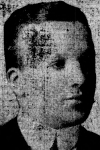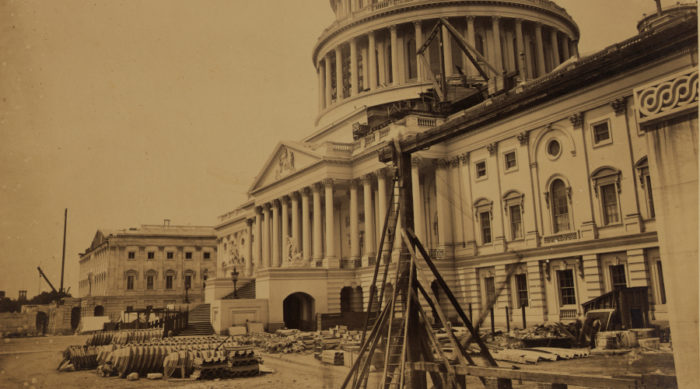
Another new year, another spate of newly-out-of-copyright books. This year, I discovered a brief (under 40 page) memoir of growing up in Washington during the Civil War. It was written by Elizabeth K. Vincent in 1924, so as of January 1 of this year, it is entirely unencumbered by any copyright restrictions.
Elizabeth Kipp was born November 1849 in New York, the daughter of Ezra and Margaret Kipp. A few years after her birth, the family moved to Virginia, but found that their anti-slavery stance did not endear them to the local population. Even before Lincoln’s election, Ezra Kipp decided to sell the farm he owned in Arlington Mills, about four miles west of Washington and the same distance northwest of Alexandria.
And so, Kipp and his family moved to Washington D.C., where they were more likely to be surrounded by like-minded people. They moved to H Street northwest, in a house overlooking the Presbyterian Church that Lincoln would attend frequently during his presidency. The family would run a boarding house there.
Much later, Elizabeth Kipp, now Elizabeth Kipp Vincent, would write her memoirs of that time, including a number of visits to Capitol Hill:
Among other sight-seeing trips, I went to the Navy Yard to see the famous Monitor of Ericcson and Captain Worden – the latter, by the way, being distantly connected with my family by marriage. Someone had called this odd craft “a cheese-box on an iron raft,” but it was really a notable bit of iron which had wrought wonders for our cause.
While her recollections are interesting, they have – like so many written well after the fact – some errors. For instance, in spite of what she wrote, work did continue on the Capitol throughout the war. It was, in fact, one of the things Lincoln insisted must be completed, to show that the Union had not yet given up on the United States. Nonetheless, her impressions were not entirely wrong, either:
The Capitol itself was not finished – and I can not recall that very much in the way of construction went on during the war, the surrounding grounds being strewn with the marble blocks destined later to complete that noble edifice.

Elizabeth took advantage of the information passed to her by her father’s lodgers, as well:
The great and near-great statesmen at the capital were having strenuous times. As one of the clerks of an important congressional committee lived at our house, we sometimes heard, through him, that such and such a Senator or Representative was going to make his great speech on the conduct of the war, our foreign relations, or the finances of the country, – the latter subject being a highly important one at that juncture. Forthwith we went, as visitors, to the Senate gallery, or that of the House, as the case might have been, and there listened to speeches regarding events which have since become history.
Most interesting to history was that she did manage to meet President Lincoln at one of his levees one evening, and later was one of the many who saw him lying in state in the Rotunda of the Capitol.
Elizabeth would not marry until she was 35. Her husband was Joseph Vincent, a teacher nine years her junior. They would have no children. They lived in New York City for much of the time, but continued to have close connections to her family, including taking in her nephew Whitney Kipp for a time. The younger Kipp (pictured) would die tragically in 1913 in a boating accident in New Hampshire.
After the death of Joseph Vincent, Elizabeth would become a teacher herself, and move west to California. It was here that she met F. Ray Risdon, who encouraged her to write down her recollections from her time in the nation’s capital.
